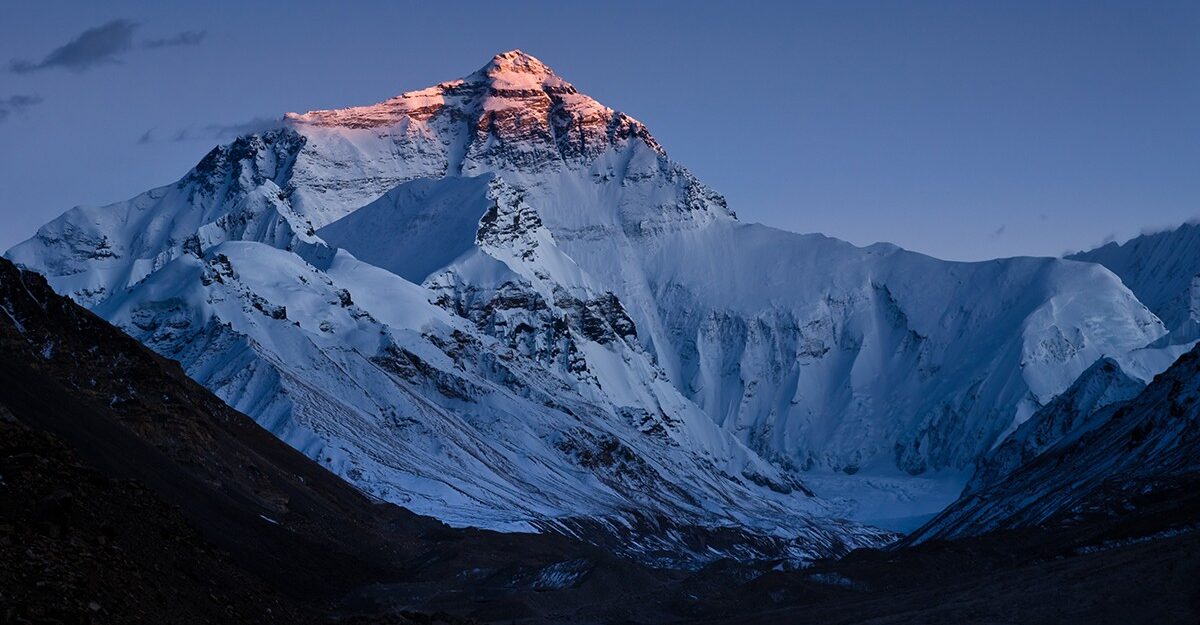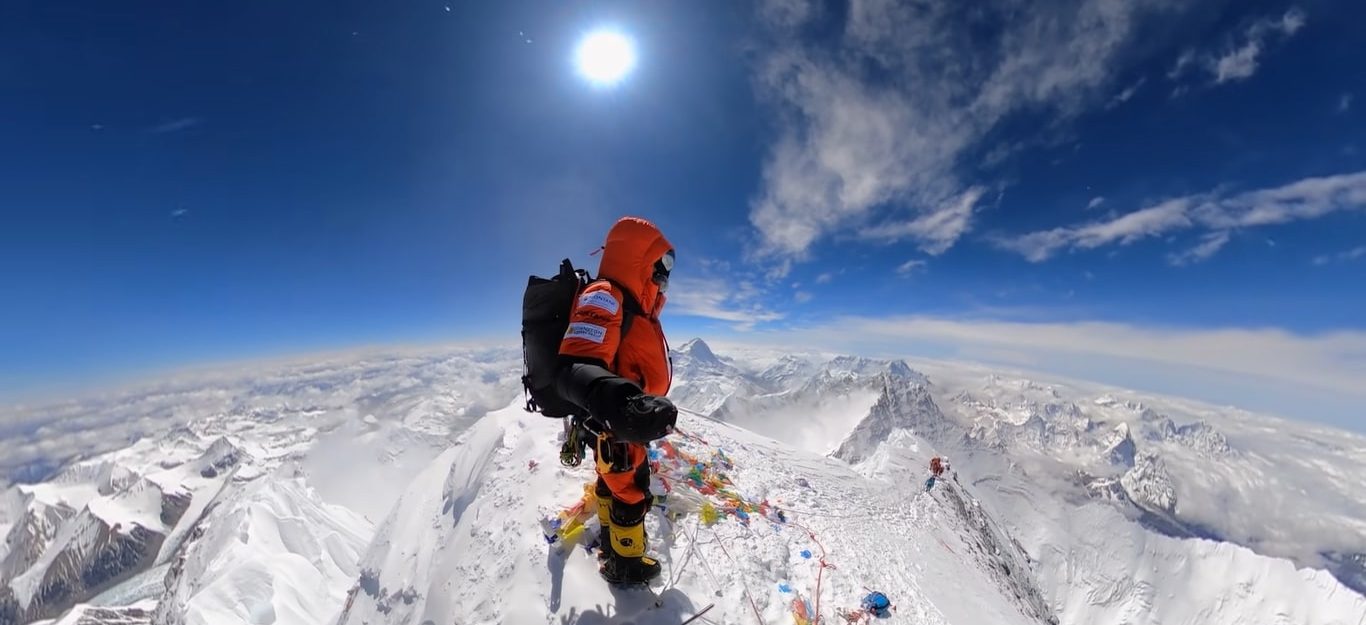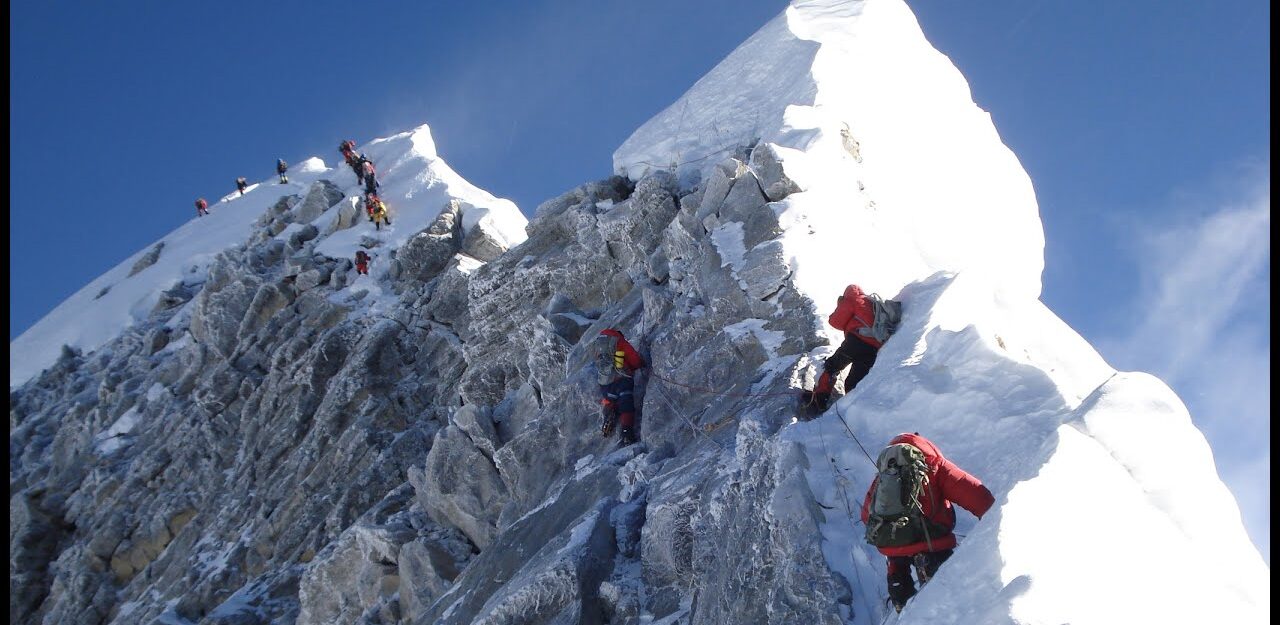
How Many People Climb Everest Each Year?
Mount Everest, the highest mountain on Earth, stands tall at 8,848 meters (29,029 feet). Furthermore, it holds an unparalleled allure for adventurers and mountaineers worldwide. Additionally, summiting Everest is considered a remarkable feat that requires exceptional physical and mental endurance. Similarly, in this blog, we will delve into the number of people who undertake the Everest climb each year.
Moreover, we’ll also examine the challenges they face, the influencing factors, and the impact of this extraordinary endeavor.
Overview

Mount Everest, the highest peak in the world, continues to attract climbers from around the globe seeking to conquer its majestic summit. Each year, a select number of individuals undertake the arduous journey, navigating treacherous terrain, extreme altitudes, and unpredictable weather conditions.
While the exact figures may vary, an average of 500 to 600 climbers successfully reach the summit annually. However, climbing Everest comes with inherent risks, and a small number of climbers tragically lose their lives each year.
The cost to climb Everest is significant, ranging from $40,000 to $100,000 or more, encompassing permits, logistics, and support services. Nepal benefits economically from Everest expeditions through permit fees, while Sherpas, essential members of the climbing teams, receive compensation ranging from $3,000 to $6,000 per climbing season.
Climbing Everest remains an extraordinary achievement, highlighting both the allure and the challenges of conquering the world’s highest peak.
The Magnitude of Everest’s Attraction
The desire to conquer Everest has captivated the imaginations of countless individuals. This drives them to brave the formidable challenges that lie ahead. The allure of standing atop the world’s highest peak, with its breathtaking views and sense of accomplishment, has become an irresistible calling for many adventurers.
Everest Base Camp and the Start of the Ascent
Before climbers can embark on their arduous journey to the summit, they must first acclimatize at Everest Base Camp (EBC). It is situated at an altitude of 5,380 meters (17,600 feet). EBC serves as a crucial launching point for Everest climbers, providing a base for rest, acclimatization, and preparation for the demanding climb ahead.
The Khumbu Icefall and the Role of Mountain Guides
One of the most treacherous parts of the Everest climb is the Khumbu Icefall. Additionally, it is an icy obstacle filled with crevasses and constantly shifting ice towers. Moreover, negotiating this hazardous terrain requires skill and experience. Furthermore, expert mountain guides play a vital role in safely leading climbers through the Khumbu Icefall, minimizing the risks involved.
The Everest Climbers: A Diverse Cohort
Each year, a diverse group of individuals from various corners of the globe embark on the journey to conquer Everest. The Everest climbing community is a melting pot of backgrounds, professions, and motivations. It showcases the universal appeal of pushing one’s limits and embracing adventure.
Weather Forecasting and Climbing Windows
Accurate weather forecasting is paramount for the success of an Everest expedition. Climbing windows, and limited periods of favorable weather for summiting the mountain, play a crucial role in determining the timing of summit attempts. Monitoring weather patterns and seizing the right opportunity is essential for a safe and successful climb.
Summit Day: The Final Ascent
Summit day is the culmination of weeks, or even months, of preparation and acclimatization. On this day, climbers face the most grueling challenges, including extreme altitudes, freezing temperatures, and oxygen deprivation. Reaching the top of Everest demands unwavering determination, physical stamina, and mental fortitude.
The Everest Climbing Season
Due to the harsh weather conditions and limited climbing windows, there is a specific climbing season for Everest. This season typically falls in the spring and autumn. It provides a relatively stable weather window for climbers to attempt their ascent. The duration and timing of the climbing season play a crucial role in the number of climbers on the mountain each year.
The Number of Everest Climbers Each Year
Estimating the exact number of climbers on Everest is a complex task. Various sources, including mountaineering organizations and governmental bodies, provide approximate figures. While these numbers fluctuate from year to year, they give us an overview of the scale of Everest expeditions and the increasing popularity of summiting the world’s highest peak.
Local communities and the environment’s effects
The influx of climbers to the Everest region has both positive and negative effects. The climbing industry generates economic opportunities for local communities, such as tourism, mountaineering services, and infrastructure development, benefiting them in various ways.
However, the rise in visitors also presents environmental challenges, including waste management and the preservation of delicate ecosystems.
Everest in Context: Comparing Population Size and Everest Climbers
To put the number of Everest climbers into perspective, it is interesting to compare it to population sizes and other remarkable statistics. Despite being a challenging and exclusive pursuit, the number of Everest climbers each year is still a fraction of the global population. This comparison highlights the extraordinary nature of Everest expeditions and the select few who undertake this remarkable endeavor.
What will climbers come across while climbing Everest each year?
Climbing Everest is a monumental undertaking that poses numerous challenges and obstacles for climbers each year. Let’s explore some of the key elements and experiences climbers encounter on their journey to the summit of Mount Everest.
The Climbing Everest Experience
Climbing Everest is a grueling and demanding endeavor that tests the limits of physical and mental endurance. Climbers face extreme altitudes, harsh weather conditions, and treacherous terrain as they ascend toward the summit. The experience demands meticulous planning, preparation, and unwavering determination.
The Summit of Mount Everest
Reaching the summit of Mount Everest is the ultimate goal for climbers. Standing at 8,848 meters (29,029 feet), the summit offers awe-inspiring views and a sense of unparalleled achievement. However, the journey to the top is not without its challenges and risks.
Climbers Summited
Every year, a select number of climbers successfully reach the summit of Mount Everest. Moreover, These individuals have endured weeks or even months of physical training, acclimatization, and perseverance. Summiting Everest is a significant accomplishment that represents the culmination of hard work and dedication.
Nepal Side and Southeast Ridge
The most popular route for climbing Everest is the southeast ridge, which is approached from the Nepal side. This route starts from Everest Base Camp (EBC) and ascends through the Khumbu Icefall, the Western Cwm, the Lhotse Face, and the Geneva Spur before reaching the South Col. From there, climbers make their final push towards the summit along the southeast ridge.
Bottled Oxygen and Supplemental Oxygen
Due to the extreme altitude and thin air, climbers often rely on supplemental oxygen to aid their ascent. Bottled oxygen is commonly used above 8,000 meters (26,000 feet) to help climbers cope with the reduced oxygen levels and increase their chances of reaching the summit. The use of supplemental oxygen can provide a vital lifeline and mitigate the risks of altitude-related illnesses.
Everest climb on Nepal’s South Col Route

The South Col route is the final leg of the ascent to the summit. In this section, climbers face steep slopes, icy conditions, and the challenge of extreme altitude as they navigate this section. Moreover, from the South Col, climbers must traverse the rocky slopes of the Southeast Ridge.
Additionally, they should negotiate the Hillary Step and overcome the final technical challenges before reaching the summit.
Himalayan Database
The Himalayan Database is a comprehensive record of climbing expeditions in the Nepalese Himalayas, including Mount Everest. Furthermore, it provides valuable data on climbers who have attempted the mountain, their routes, successes, and tragedies.
Moreover, the database helps researchers, climbers, and mountaineering organizations gather information to improve safety and understanding of Everest expeditions.
Climbers Attempted and Reached the Summit
Each year, a significant number of climbers attempt to reach the summit of Mount Everest. Additionally, these individuals come from different parts of the world. Moreover, they are driven by their personal goals, aspirations, and the allure of conquering the world’s highest peak.
However, while some succeed and stand atop Everest, many others face various challenges and obstacles that prevent them from reaching the summit.
Climbing Everest is a remarkable and life-changing experience. Furthermore, it demands dedication, preparation, and a deep understanding of the mountain’s risks and rewards. Moreover, the climbers who attempt this extraordinary feat encounter a range of physical, mental, and logistical challenges as they strive to conquer the world’s highest peak.
FAQs
How many people successfully climb Everest each year?
On average, around 500 to 600 climbers successfully reach the summit of Mount Everest annually. However, this number can fluctuate depending on factors such as weather conditions, climbing experience, and individual fitness levels.
How many climbers died on Everest each year?
The number of climbers who died on Everest each year varies. On average, the number of deaths can range from 5 to 15 climbers per year. It’s essential to acknowledge the risks associated with high-altitude mountaineering and prioritize safety measures and preparation.
How much does it cost to climb Everest?
Climbing Everest is an expensive endeavor due to the logistical requirements, permits, equipment, and support needed. On average, the cost can range from $40,000 to $100,000 or more. It also depends on factors such as the chosen route, level of support, and services included.
How much does Nepal make from Everest?
The government of Nepal charges permit fees for climbers attempting Everest, generating revenue. Permit fees can range from $11,000 to $25,000 per climber, depending on the route and season. The climbing industry in Nepal also provides employment opportunities and generates income for local communities through guiding, portering, and related services.
How much do Sherpas get paid in Nepal?
Sherpas play a crucial role in supporting Everest expeditions. They can earn between $3,000 to $6,000 per climbing season on average. However, it’s important to note that individual circumstances, experience, roles, and expedition logistics can influence Sherpas’ compensation.
It’s recommended to consider the overall safety and ethical aspects when planning an Everest climb and ensure fair treatment for the Sherpa community.
Conclusion
The allure of Everest continues to captivate adventurers from around the world. This leads to a significant number of climbers attempting to reach their summit each year. While the exact figures may vary, the enduring quest for personal triumph and the desire to conquer the world’s highest peak make Everest an icon of human achievement.
However, it is crucial to balance this pursuit with the preservation of the mountain’s fragile environment and the well-being of the local communities. The Everest climbing phenomenon is a testament to the indomitable spirit of human exploration and the relentless pursuit of extraordinary goals.
You May Be Interested In
Inquiry
If you want to know anything regarding the trip or any other issue, please feel free to ask us
